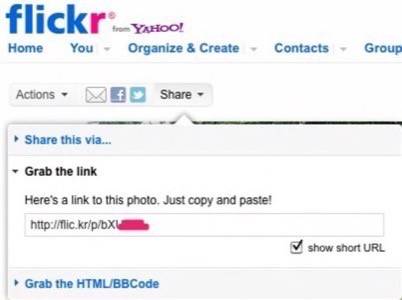
You have just returned from a corporate retreat or some other business event that was well-documented with several amateur photographers. Now you want to share all of these pictures amongst your co-workers. The challenge is that you want to keep them private to the participants and not plaster them all over the Internets. What to do?
Assume that your requirements are to satisfy the ultra-paranoid in the group and also find something that is dirt simple to use. You don’t want to make everyone join a new social network just to see the photos; most of us have too many logins already. That leaves out most of the microblogging sites. And you don’t want to have to worry that someone will click on the wrong button and inadvertently share the entire photo collection with the universe, including the press, competitors and so on.
Facebook, Instagram, Google+ and many other social-networking sites aren’t very good at setting up discrete group-privacy controls, so they are out of the running for our purposes. And while there are dozens of file-sharing sites such as Box.net and Evernote, the idea is to find something that is designed around uploading and sharing images.
With that in mind, we looked at the following five services:
- Shutterfly.com
- Photobucket.com
- Flickr.com(now part of Yahoo)
- Zangzing.com
- Posterous Spaces(now part of Twitter)
None of these services is perfect, but they fall into two broad categories: those that have better privacy controls and those that are easier to use.
Let’s look at our requirements in more detail:
First, we want a service that can create a private space that doesn’t appear on search engines and can’t be discovered by unauthorized users. Photobucket and Shutterfly both do this, by setting up a special URL (Photobucket.com/groupname or Groupname.shutterfly.com) for your group. In Photobucket, for example, you have three choices for each album’s privacy controls: everyone can see them, no one else can see them, or you can password protect them by invitation only. The latter is perfect for this application, and you can set up an album password so that only those folks who know the password can see and download the photos. (See screenshot below.) Shutterfly has similar options with its Share Sites feature.
The problem with both Photobucket and Shutterfly is that you need to become a member to upload photos: That is fine if you have just a few shutterbugs in your group, but if everyone wants to be able to contribute images, it can become cumbersome.

Flickr offers URLs for groups, such as http://www.flickr.com/groups/groupname. But Yahoo really wants you to sign up to its service, and you will need to do so if you want to post any photos. Flickr has a guest pass option, but it is designed to work with individual photos. And Flickr users have to make sure to set up its autoposting/notification features to keep your photos from showing up in your Facebook Timeline or other places.

Zangzing (which we have written about previously) is easier to use but that comes at a privacy cost. You can set up individual albums that have their own URLs, such as http://www.zangzing.com/username/albumname. But because there is no password required, anyone who knows the URL can access the entire album. And you must join the service in order to upload pictures, you will need to join. On the plus side, you can also email pictures to [email protected], and they will be automatically posted to the album.
Finally, Posterous is more of a blogging site than a photo collection, but it can be used for sharing photos, as well. Indeed, if you want to mix your photos with other business content, Posterous could be a good choice and could serve as the base for a simple low-end Web presence. Groups of photos can have their own URLs, but you do need to become a member to post content. You can also email your photos and have them posted to your site, like what Zangzing does.
Recommendations: Start with Zangzing
We recommend you start with Zangzing, especially if you require the simplicity of a shareable URL and don’t want to mess with having each person sign up for the service. If you need the additional security that a membership site offers, then look at Photobucket. It has more granularity for the security options than Shutterfly. Steer clear of Flickr: Its interface is somewhat long in the tooth, and it is too easy to click on the wrong button and end up sharing your entire photo collection to Facebook or Twitter. If you have more confidence in your users’ abilities, you can set up private groups in Facebook or Google+.

















